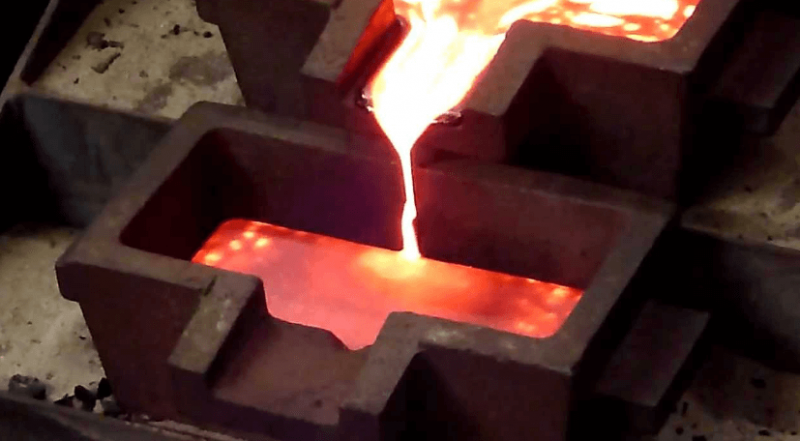Total Chromium in Mineral Chromite and Ferrochrome Slags
The total chromium content in mineral chromite and ferrochrome slags can range from a fraction of a percent in the slags to greater than 30 pct in the ore concentrates. Because of this variation and because of the difficulty in dissolving chromite-containing samples, the method of choice at this Center has been fusion with sodium […]
Analysis of Chromite and Ferrochrome Slag
This report describes the elemental characterization of chromite and related materials at the Bureau of Mines, Albany Research Center. Analytical methods for determining the major constituents, representing extensive experience, refinement, and development, are described and fully annotated. This presentation should allow other laboratories to use these methods and obtain comparable results with a minimum of […]
Melting Gold Alloys for Casting

The problem of scrap is probably of greater importance in the production of gold, silver and other precious metal alloys than is the case for base metals and alloys. Remelting of gold and silver scrap in the shop is always a costly process because it involves losses by oxidation of the base metals in the […]
Ore Concentration Practice of the Consolidated Mining Smelting
Three mills are now operated by the Consolidated Mining & Smelting Co. of Canada, Ltd.: (1) The Sullivan Concentrator, Chapman Camp, B. C. (near Kimberley, B. C.), (2) the St. Eugene Concentrator, Moyie, B. C., and (3) the Tadanac (Customs) Concentrator, Trail, B. C. Differential flotation is the only concentration method employed in all three […]
Titanium Castings Sand Molding Process
Objective To produce industrial-grade titanium castings by processes that are nonpolluting and lower cost than the currently used rammed-graphite process. Approach Foundry-grade zircon and olivine sands, bonded by waterglass or bentonite, are used to make shell or rammed molds which require relatively low-drying temperatures and do not generate noxious fumes during drying or casting. Procedures […]
Ferrous Scrap Steel
For the past decade, the Bureau of Mines has addressed the problem of using low-grade scrap, such as the ferrous fraction of municipal refuse, to produce steels of acceptable quality. The investigations are a part of the Bureau’s 65- year commitment to minimize the requirements for mineral commodities by devising new technologies for the recovery […]
Copper Cementation for Small Scale Operations
We studied the precipitation of copper from dilute acidic sulfate solutions using shredded automobile scrap in a rotary drum. The tests established that the scrap in the rotary drum precipitated copper faster and more completely than shredded, detinned, tinplate scrap in a launder, with comparable iron consumption. Although power is required to rotate the drum, […]
Recover Copper in Smelter Dust
The Bureau of Mines researched methods for recovering copper from cyclone and electrostatic-precipitator dusts of primary copper smelters as part of its program to maximize minerals and metals recovery from primary and secondary domestic resources. Small-scale studies showed that use of 110 pct stoichiometric sulfur and 123 pct stoichiometric carbon, based on producing a 40-pct […]
Ceramic Mold Inserts
For many years, the diecasting process has been employed by the nonferrous foundry industry. In this process, castings are produced by forcing molten metal under high pressure into reusable permanent metal molds commonly called dies. Figure 1 shows the sequence of steps normally used in diecasting. Although zinc-base and aluminum alloys account for the bulk […]
Zinc Concentrate Roasting & Cadmium
Cadmium is not the principal recoverable constituent in any ore, but it does occur at a ratio of about 1:200 with zinc. If lead and zinc are considered major products, then the major metal byproduct of the zinc industry was the more than 3 million pounds of cadmium produced in the United States in 1978 […]
